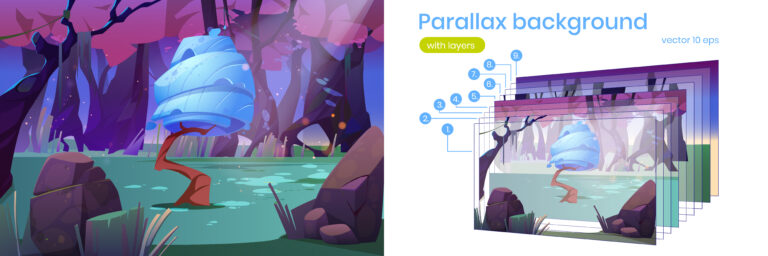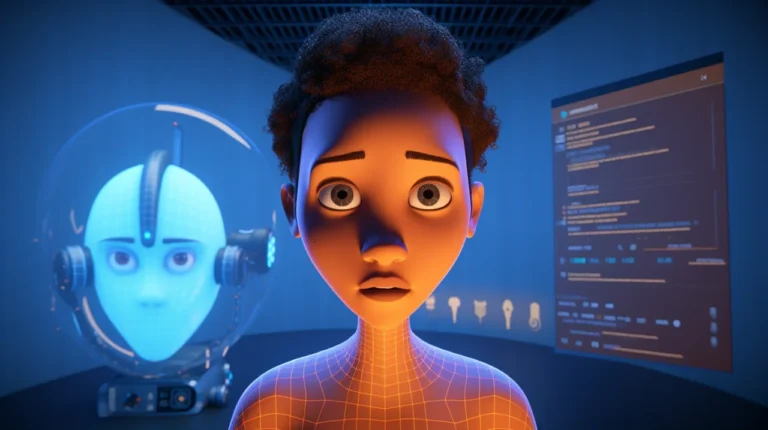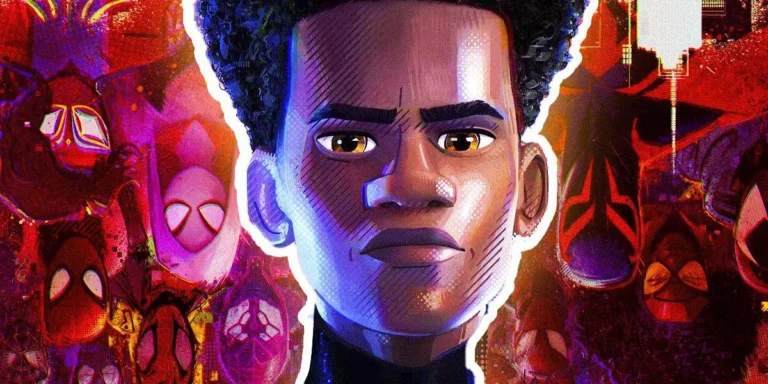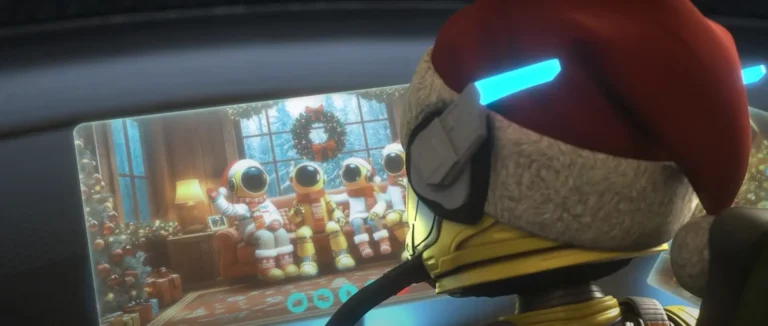From flipbooks to 3D CGI, various animation styles capture our hearts and minds like no other medium. But with endless styles to choose from, how do you determine which approach fits your story? Do you hand-draw each cel or go full motion capture? Are you a claymation sculptor or a digital puppet master? Well, let’s unravel the possibilities together!
In this guide, we’ll gallop through history spotlighting pioneering animation techniques. You’ll discover the principles powering everything from classic Disney films to surreal modern Adult Swim shorts. Whether you’re an aspiring animator or a passionate viewer, animation’s diverse styles have something for all imaginations. Let’s take this journey frame by magical frame! Here is the list of different animation styles:
- Traditional Hand-Drawn Animation
- 3D Animation
- 2D Vector Animation
- Stop Motion
- Claymation
- Anime
- Rotoscoping
- Motion Graphics
- Experimental Animation

Need Animation Services?
Visit our Animation Service page to see how we can help bring your ideas to life!
Traditional Hand-Drawn Animation: The Classic Frame-by-Frame Technique
Long before computers, animation began by drawing successive illustrations on paper. Using a multi-plane camera, artists would adjust drawings between frames to create the hypnotic illusion of movement when played sequentially. This meticulous approach allowed for fluidity and personality absent from earlier forms like stop motion. And despite technological leaps, hand-drawn animation still captures hearts today.
Legendary studios like Disney elevated frame-by-frame into an art form. Every scene flows organically thanks to subtle shifts between thousands of detailed cels. Emotions read clearly on expressive characters. Squashy, bouncy motion work gives weight and impact. Warm, lush watercolor backgrounds pull viewers into nostalgic worlds. From Snow White to Aladdin, traditional animation’s fingerprints charm across generations.
Of course, this style requires vast human effort. However, limitations breed creative solutions. Distinctive shortcuts like walk cycles, smear frames, and multi-cel setups control workload while maximizing drawn nuance. Dedicated artists embrace the craft. And when smoothly executed, frame-by-frame animation feels intimately hand-crafted amidst slick CGI. The extra effort pays off in that bespoke appeal. Why else do we still cherish Steamboat Willie nearly a century later?
Read More: Traditional and Digital Animation in Commons
Traditional Hand-Drawn Animation Finest Examples:
- Snow White (1937) – Disney’s first feature-length animated film which pioneered the robust frame-by-frame style
- Spirited Away (2001) – Gorgeous hand-drawn anime rich with fantasy and heart from Hayao Miyazaki
- The Secret of Kells (2009) – Stunning Irish film innovated with a flat silhouetted style
3D Animation: Digital Puppet Mastery
On the digital end lies 3D animation which constructs virtual puppets movable in simulated 3D space. Artists build armatures of digital bones, joints, and surfaces allowing incremental positioning. Sophisticated software handles interpolating between key poses. This unlocks unlimited camera angles and fluidity impossible otherwise.
From abstract shapes to detailed humans, 3D animated characters feel tangibly real and emotive when done well. Their virtual world bokeh aligns perfectly across shots. Granular light and physics further heighten the realism. Facial motion capture transfers actors’ nuances into CGI models. Virtual cameras allow cinematic techniques like deep focus, tracking shots, and lens whacking for heightened drama.
Yet 3D’s exponential flexibility comes at a cost. Meticulous sculpting, rigging, surfacing, shading, lighting, and rendering requires vast skill and effort. Thankfully today’s intuitive tools like Blender help tame the beast. Efficient grids and rigging libraries modularize repetitive tasks. Render farms crunch frames in parallel. The 3D mountain remains towering but is finally more accessible to indie creators with enough passion and caffeine!
Some of the Best 3D Animation Examples:
- 1995) – Pixar’s first feature introduced CGI animation and relatable characters
- Wall-E (2008) – Charming visual storytelling caToy Storyrried this heartfelt human-robot romance
- Into the Spiderverse (2018) – Inventive stylized CGI and hand-drawn hybrid animation
2D Vector Animation: Digital Control with Hand-Drawn Heart
Straddling traditional frame-by-frame and 3D lies 2D vector animation which leverages digital precision while retaining hand-crafted charm. Illustrations are composed using scalable lines and curves rather than rasterized pixels. This flexibility makes vector art editable and resolute at any size or distance.
2D vector animation works by rigging vector art in parts that can be easily animated. The smooth scalable outlines emulate traditional cel animation without jittery pixels. Vectors allow coloring regions cleanly with no artifacts. Digital layers keep elements neatly separated for animation. Helpful effects like shape tweening and motion blur imbue depth and save tedious in-between frameworks. Vector art remains crisp and editable at any size or distance. So animators gain the control and versatility of digital alongside the appealing look of classic hand-drawn style.
Yet vector projects require just as much skill as hand-drawn craft. Illustrating appealing characters with thoughtful shapes, silhouettes, and appealing features remains vital. But vectors allow applying 2D art style knowledge with modern conveniences. And that combo births revolutionary projects like Disney’s Paperman and visual feasts like Netflix’s The Mitchells vs. The Machines. Innovation stands on the shoulders of craft.
If you want to find out more about the application of this mesmerizing animation style in game industry, check out our article about Vector Art in Games.
Charming 2D Vector Animation Examples:
- Paperman (2012) – Disney short blended 2D and 3D animation beautifully
- The Mitchells vs. The Machines (2021) – Visually dazzling Netflix comedy film
- Klaus (2019) – Innovative texturing advanced digital 2D capabilities
- Castlevania anime (2020) – Dark action series leveraged slick vector style
Stop Motion: Breathing Life into Physical Materials
Unlike consistent environments of cel or CG animation, stop motion leverages hands-on materials manipulated frame-by-frame. Physical objects get meticulously adjusted between shots, whether clay, toys, papercraft, dolls, sandbox, or any tangible object. Photos capture incremental changes which then play sequentially to magically animate the objects.
This handmade approach results in charming imperfections and fingerprints absent from polished 3D. Textures feel substantive and authentic, from woolen Sweater boys. Sweater boys. Sweaters to fuzzy Fraggles. Storytelling engages tactilely through crafted objects and sets. Stop motion turns the mundane into magic simply by unlocking life already within everyday physicality.
Classic adventures from King Kong to Wallace and Gromit remind us of stop-motion’s wonder. Features like Anomalisa and Isle of Dogs still employ its tangibility. And playful experimenters worldwide stretch possibilities further, projecting stop motion onto bodies or public architecture for ephemeral stories visible only through camera lenses. Stop motion persists as the handmade heart of CGI achievements.
Claymation: Sculpting Characters Frame-by-Frame
The process of creating Claymation is the same as that of Stop Motion, but the use of iconic clay in the creation process gives it an identity of its own. Claymation brings physical texture and intimacy through its signature sculpted media.
Warmly malleable yet stable enough to incrementally adjust, clay offers a direct medium for hand-crafting personalities. Even simple ball and stick armatures enthrall through their fingerprint imperfections, and exposure outlines add characteristic charm.
But molding flawless stop motion movement via clay requires zen-like patience. Fractions of millimeters between frames make lips sync and footsteps flow mesmerizingly smooth. Thankfully onion skinning or pose-to-pose blocking lets animators focus on key expressions before filling intermediary frames and detailed storyboard guide shot planning.
The sheer meticulous craft claymation requires results in irresistibly human characters brimming with quirky flaws. From Gumby to Wallace and Gromit through modern Laika films, polymer putty’s pliability shines on-screen through savvy animators’ guidance. We sense creators’ hands directly shaping performances behind the magic.
Stellar Claymation Animation Examples:
- Chicken Run (2000) – Charming Aardman claymation feature film with intricate detail
- Isle of Dogs (2018) – Wes Anderson’s meticulously crafted stop-motion canine tale
- Shaun the Sheep (2015) – Expressively crafted claymation series full of whimsy
Anime: A Fusion of Art and Emotion
Anime, Japan’s distinctive contribution to animation, mesmerizes audiences with its blend of exaggerated emotional expression and imaginative storytelling. Known for its vibrant art style, anime encompasses dynamic action, fantastical elements, and deeply engaging drama, inviting viewers into visually stunning hand-drawn worlds.
Each anime work is a tapestry of art and story, combining striking visuals with complex character arcs and layered narratives. The style is renowned for its large, emotive eyes and meticulously detailed settings, bringing each scene to life with a unique emotional depth. Beyond its visual appeal, anime is celebrated for its exploration of diverse, often challenging themes, ranging from the trials of adolescence to philosophical and societal questions.
Anime’s cultural impact extends into fashion, art, and even video games, with its iconic characters and motifs becoming symbols of global pop culture. Technologically, it seamlessly integrates traditional hand-drawn techniques with modern CGI, enhancing depth and fluidity while retaining its soulful charm.
In essence, anime is more than just an animation style; it’s a heartfelt expression of storytelling and artistic vision. Its ability to resonate across cultures and evoke shared emotional experiences cements its place as a beloved and influential form of global art. You can also read about how to find your unique art style.
Well-made Anime Animations:
- Spirited Away (2001) – A girl undertakes a magical quest in a storied Miyazaki anime film
- Attack on Titan (2015) – Dark fantasy action epic with lavish backgrounds and intense action
- Violet Evergarden (2018) – Melodrama anime with lavish backgrounds and emotional plots
- Cowboy Bebop (1998) – Space western anime with stylish designs and nuanced characters
Rotoscoping: Tracing Movement for Mesmerizing Motion
Rotoscoping incorporates recorded live-action film into animated work by hand-tracing movement frame-by-frame. Animators meticulously outline real human and object motions. When played sequentially, this replication achieves staggeringly fluid verisimilitude. Reinvented backgrounds and audio build unique contexts around the realistic foundations.
The rotoscoping technique evolved from early Disney experiments like Snow White. Eyelines and human figures provided references for tracing lifelike animation. Ralph Bakshi amped rotoscoping in cult classics like Lord of the Rings and American Pop, innovating with multi-exposure effects. Momentum continues today with software assisting frame-by-frame tracing and interpolation.
Critics argue rotoscoping lacks the creativity of imagination. But imaginative interpretation remains vital in embellishing or stylizing the tracings. Rotoscoping itself simply provides an anchor in reality. Traced frames evoke mesmerizing uncanny qualities when divorced from their original context. And as technology improves, possibilities will continue expanding for this niche animation domain.
Famous Rotoscoping Animation Examples:
- A Scanner Darkly (2006) – Used rotoscoping to reflect the character’s descent into drug addiction
- Undone (2019) – Amazon series rotoscoped for a trippy, shifting sense of reality
- Tower (2016) – A rotoscoped film based on a tragic real-life shooting event
Motion Graphics: Dynamic Visual Communication
Beyond traditional narratives, animation also serves functional purposes. Fields like motion graphics embed animated text, logos, infographics, and video into projects requiring dynamic communication. This broad umbrella spans kinetic title sequences, animated logos, commercial spots, and explainer videos.
Motion graphics present information visually through illustrated animations, typography, shapes, colors, and cinematic techniques. Music and voice-over guide context alongside bold images. Careful choreography times elements sequentially for maximum impact and comprehension. With imaginative style, motion graphics make dense data dance or product benefits pop.
Top animation companies leverage motion graphics to summarize complex stories rapid-fire, often using metaphor and parody. Franchise recap videos compress elaborate timelines into concise morsels. Video essays utilize kinetic text and graphics to unpack ideas accessibly. And program title sequences embed backstory elegantly before the show begins. When executed engagingly motion graphics educate as they entertain across applications.
Motion Graphics Examples:
- Stranger Things intro – Evocative typography and retro design set the tone
- Watchmen title sequence – Builds backstory and intrigue before the show begins
- Inside Out short film intro – Vibrantly explains complex psychology concepts
- Schoolhouse Rock shorts – Educational and catchy segments teach kids lessons
Experimental Animation: Expanding Artistic Frontiers
Beyond traditional techniques, the fringes of animation push aesthetic, conceptual, and technical limits ever further. Independent animators subvert expectations through radical approaches to narrative, design, interactivity, materials, and contexts. Their boundary-breaking experiments advance animation’s expressive potential.
Mid-century avant-garde films blurred the lines between animation, fine art, and cinema. Contemporary artists like David O’Reilly create 3D engines capable of rendering infinite worlds in real time. Others hand-etch images directly into the physical filmstrip itself. Some interactive projects make viewers part of generative animations. And VR projects immerse within animated spaces impossible on flat screens.
Such experimental animations may perplex audiences accustomed to Pixar polish. But their provocations birth fresh paradigms that gradually filter into the mainstream. Only by daring do we expand the realms of possible and innovative animators to inspire future creators to keep pushing limits ever further. The outer edge often reveals startling new centers.
Choosing Your Animation Style
With so many options, selecting an animation style may seem daunting. But consider these factors when deciding which approach best fits your needs and story:
– Does the style match your vision creatively?
– Do you have the resources and skills to pull it off convincingly?
– Does it resonate appropriately with your target audience?
– Will the style last and avoid dating too quickly?
– Can it compellingly convey critical emotions and ideas?
There are no inherently right or wrong answers. Every technique contains unique strengths. The key lies in thoughtfully matching styles to concepts for maximum impact. And even blending multiple mediums can birth utterly novel and resonant results. Trust your instincts, embrace constraints, but pursue your vision boldly. If passion aligns with practicality, you might just redefine what animation can be.
Here’s hoping this animation world tour sparks ideas for your next shorts, loops, clips, and features! From cel vinyl to virtual vertex, animation’s future remains wide open. What wondrous creative dimensions will you explore next? The journey begins with a single then another then another sketched frame, molded shape, or clicked keyframe. So grab your gear, choose your style, and start animating today!












